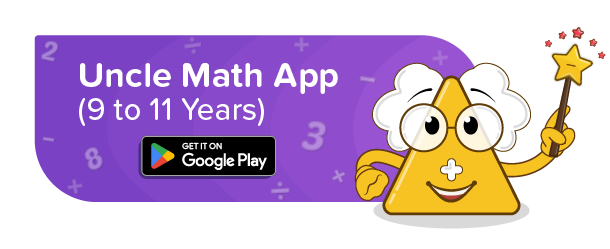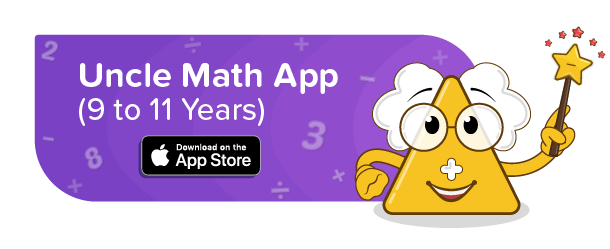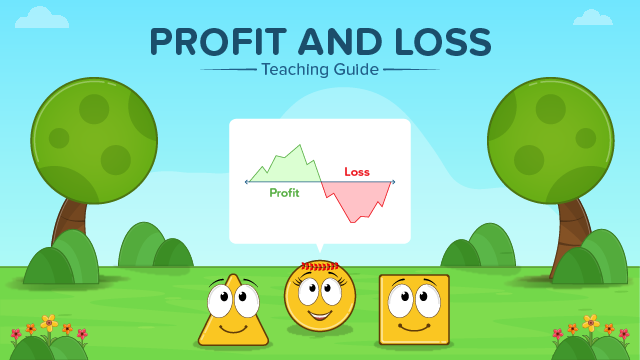
Math Story : Selling Price, Cost Price, Profit And Loss
All About Entrepreneurship
“The house robbery cases have increased in Samper town in the last month. This is not good. We need to find out who is behind all this and stop this”, says Uncle Math. The kids decide to help him.
For the next two days Triho, Cirha, Cirho, and Squarho divide themselves into 4 groups and keep a close watch on the activities of Samper town.
Suddenly Squarho comes running. “I saw! I saw Asquarho Boss and his gang stealing things in the town! They are behind all this”, he says as he huffs and puffs. “I knew it!” says Cirho. “Instead of bothering Uncle Math, let us come up with a solution to solve the problem this time”, says Triho. Others agree with him and think of various solutions.

“I know what will solve this problem”, says Triho. “We will build a small camera that will be fixed on the doors of the houses. This camera will automatically lock and unlock the doors after detecting the owners face. If there is a mismatch, it will produce a loud sound for people to know that their house is unsafe”, he explains.
“This is brilliant”, says Cirho. The kids like this idea. “We will name this the anti-theft camera”, says Triho. Everybody is excited. They decide to go through many books and resources to research various design methods.
Together they start building the camera using various tools. “Hurrah! The anti-theft camera is ready”, says Triho. It is a really small yet very powerful gadget.
“We could build this because Uncle Math had some spare parts left. Otherwise, it would have cost us a lot of fun coins. We need to
find an alternative”, says Cirha worryingly. The kids agree with Cirha. They cannot afford to give everything for free.

Triho starts smiling. But why? “How about converting this into a business? We can sell anti-theft gadgets at a very low price making them affordable for everyone. This will generate enough income for us to continue our production too”, he says. An amazing idea isn’t it?
“But how do we decide the price at which we sell it to the citizens?” asks Cirho. “We will have to estimate the price of all the tools that went into the design, add them to finally get the making price”, says Cirha. Together they start working on identifying their making cost.
“10 fun coins”, says Squarho. The anti-theft camera was made in 10 fun coins. The kids decide to sell it at a low and affordable priceof 8 fun coins.
Kids successfully sell their initial few pieces of the anti-theft camera. The citizens are liking it. “Hurrah! We have sold all 5 cameras for 8 fun coins each making 40 fun coins income”, says Squarho. The kids are elated.

The kids decide to make 5 more anti-theft cameras using the income created. Suddenly, Triho realizes something in between. “We were supposed to make 5 cameras because we sold 5. We can make only 4 anti-theft cameras now. But why?” he asks. Unable to understand the rationale, they decide to take Uncle Math’s help.
“So my entrepreneurs, you could make only 4 anti-theft cameras because your selling price was way lower than your cost price”, says Uncle Math. Selling price? Cost price? Some more alien words. The kids are completely clueless.
“Cost price (CP) is the price at which a product is made. Selling price (SP) is the price at which that product is sold. In your case 10 fun coins is your cost price and 8 fun coins is your selling price. Since the cost price is more than the selling price, you incurred a loss of 2 fun coins on each camera, leading to a shortage in production”, explains Uncle Math.

“Understood! So you are saying, we should have sold the anti-theft camera at a price of 10 fun coins only so that we could have generated income to produce the same 5 anti-theft cameras”, says Triho. “That depends on what is the vision of your business. Do you want to make and sell only 5 anti-theft cameras every time?” asks Unce Math.
“Definitely not! We want to make more and more anti-theft cameras”, says Cirha. “Then you need to make a profit”, says Uncle Math. “What is profit? How can we make a profit?” asks Cirho. “When the selling price is greater than the cost price, we make a profit”, explains Uncle Math.
“Oh! So we should sell our anti-theft cameras at a price greater than 10 fun coins”, says Squarho. Together they decide the selling price to be 15 fun coins. 5 anti-theft cameras and a good selling price. Everything looks good now. It is time to kick start their entrepreneurship journey.
“Hurrah! All our cameras are sold for 15 fun coins. We have made a profit of 5 fun coins on each camera. This is great”, says Cirho. The kids are elated.

Soon, the kids expand their business by using the profits earned from the previous sale. Their capacity has increased to 20 cameras now. Their teamwork and zeal for problem-solving have been kindling their entrepreneurship journey.
The robbery cases in Samper town have decreased now. Uncle Math is proud of the kids. After a huge success, it is time for a celebration. “How about a pizza party?” he suggests. “Why not!” say the kids. It is time to have some fun.
“Cheers to our business, friendship and teamwork”, says Cirha as they enjoy the delicious pizza. Being an entrepreneur is not easy. But our dedication, determination, focus and resolve make it look easy. What do you think?

We Learnt That…
- Cost price (CP) is the price at which a product is made. Selling price (SP) is the price at which that product is sold.
- Whenever the cost price is greater than the selling price, we incur a loss.
- Whenever the selling price is greater than the cost price, we incur a profit.
- An entrepreneur identifies a problem and solves it by building a business around it.
Let’s Discuss
- What was happening in Samper town?
- How did we decide to solve this problem?
- What is cost price, selling price, profit and loss?
- How did we shift from a loss to profit?
- Would you want to be an entrepreneur? Why or why not? If yes, what would you build?





